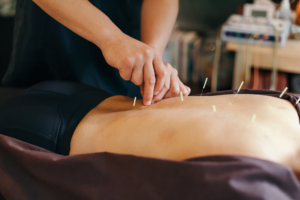I enjoy being an acupuncturist here in Flatiron NYC. I get to practice one of the oldest systems of medicine, one that dates back thousands of years. Every day our team of Chiropractors, Physical Therapists, Nurse Practitioner, and Massage Therapists make a huge impact on people’s lives by eliminating their source of pain. These moments are wonderful and that’s why I love being a part of this team. There are times, however; few and far between, when in spite of our best, integrated approaches, we cannot resolve the pain. We use a multi-faceted approach often involving biomechanics and modalities to affect muscles, fascia and tendons. Most of the time this is enough to bring resolution to our patients but what can we do when these approaches fail?
 As an acupuncturist in New York City, I am always asking this question, “What can we do to improve the efficacy of our acupuncture treatments?” Could it be possible that there is more to resolving pain than treating the local area, or even the same side the pain is located?
As an acupuncturist in New York City, I am always asking this question, “What can we do to improve the efficacy of our acupuncture treatments?” Could it be possible that there is more to resolving pain than treating the local area, or even the same side the pain is located?
Using Acupuncture to Treat Joint Pain
Last week, a patient came to our Flatiron office complaining of a pain that travels along the three joints in the upper extremity, the elbow, shoulder, and wrist, and although we have targeted these regions, the pain slowly responds. When I saw this case, it made me wonder if the opposite side puncturing technique should be employed. In chapter 63 of the classical text, it discusses this approach:
“When the pathogen invades the body, it begins on the skin and soft hair, if it retains and does not leave, it enters in the collateral, if it retains, it enters the channel to join the five viscera and intestines and stomach…this is the sequence of pathogenic transmission from the skin and soft hair to the viscera. Therefore, when treating, it should prick the channel with ordinary pricking. If the pathogen invades the skin and soft hair and retains in the minute collateral, but cannot reach the channel due to the impediment of the collateral branch of the collateral, it will flow into the large collateral and the affliction will appear on one side, but the source of disease is on the opposite side. When the pathogen enters the large collateral, it flows from left to right and then from right to left, up and down along the large collateral which joins the channel and spreads to the four extremities. As the pathogen runs in all directions not staying in a proper place…thus the contralateral pricking is necessary.
In ancient times 90% of diseases were attributed to cold because of living conditions. In this paragraph, they are discussing how cold affects the body first beginning at the skin and fine hair, then the collateral (which are similar to veins and capillaries), then the channels (which are similar to arteries) and eventually the organ systems.
One of the main principles of using the opposite side puncturing method is the nature of the pain. In the above paragraph, it discusses how the pain has no fixed location it wanders from the left side to the right side and/or up and down along the course of the channel. This is the description of our patient’s pain pattern. The patient mentions it changes every day. One day it may be in the wrist, another it may be in the elbow, and another time it will be in the shoulder.
The rest of the chapter discusses the signs and symptoms for each of the 12 channels when the opposite side puncturing method should be employed. Then it goes on to discuss the other principles.
“In treating the diseases in various channels with pricking, when the location where the channel passes is not painful, it shows that the focus is on the collateral and the contralateral pricking should be applied.”
I believe in this paragraph they are speaking of palpating. For example, if the patient has pain in the right shoulder, but when pressed, the shoulder is not painful, the opposite side treatment should be applied.
In the last paragraph, it states, “…if the patient has pain, but the channels are not affected, apply the contralateral pricking. Besides, the skin must be inspected, if there are superficial venules, the stagnated blood should be let out. This is the principle of contralateral pricking.”
In summary, contralateral acupuncture should be applied in the following cases:
- Pain that has no fixed location
- Pain that is on one side, yet when pressed, it doesn’t hurt
- If pain is on one side, but superficial veins appear on the opposite side.
At CSCM in midtown Manhattan, our team of chiropractors, nurses, physical therapists, and massage therapists are always researching the best treatments for musculoskeletal pain. As an NYC acupuncturist, I continue to research using the classical text as a guide. Using these acupuncture treatment principles, we may be able to treat complex pain conditions that have not previously responded to treatment.
